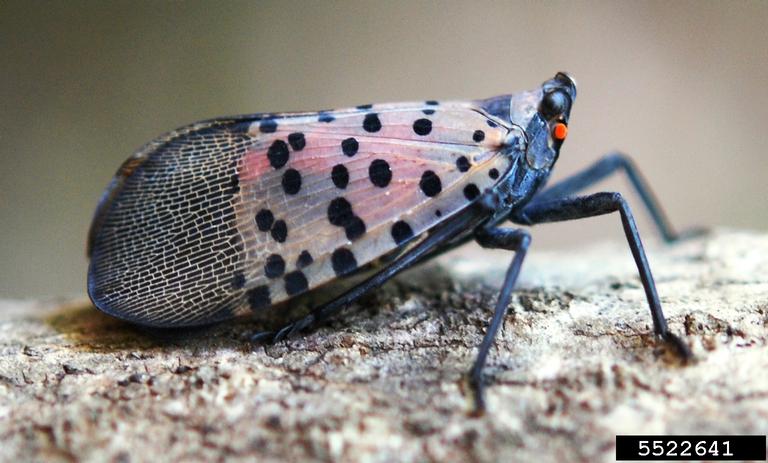Spotted Lanternfly Spotted in Tenafly
October 14, 2021
With its intricately patterned forewings and vermillion spotted hindwings, the spotted lanternfly can easily be mistaken for a beautiful butterfly gliding in the wind. But appearances are deceiving. This pernicious pest is the voracious culprit of destructive infestations on trees, crops, and a variety of other plant life. And they have been spotted right here in Tenafly.
The spotted lanternfly, also known as Lycorma delicatula, is native to Asia but has since spread to the United States. First sighted in Pennsylvania in 2014, the spotted lanternfly has increased its range of population. To date, the insect has spread to every county in New Jersey, according to Rutgers University’s Agricultural Experiment Station.
These planthoppers sap the life out of trees—literally. The spotted lanternfly feeds on the sap of over 70 different plant species, according to the New Jersey Department of Agriculture. They excrete a dew onto the trees while feeding which encourages the cultivation of a type of mold fungus that can infect and impede plant photosynthesis and growth. One of its favorite targets is the Tree of Heaven, or ailanthus altissima, which is common in New Jersey. Its appetite for economically important plants, lack of natural predators, combined with its exploding population, makes for a disastrous infestation that’s capable of serious damage. In fact, the Pennsylvania Department of Agriculture estimates the following potentially devastating consequences: “The economic impact could total in the hundreds of millions dollars and hundreds of thousands of jobs for those in the grapes, apples, hops, and hardwood industries.”
With the potential destruction these insects are capable of causing, it is all the more important to keep their population under control. However, there is currently a lack of reliable and sustainable methods to stop the spread of the spotted lanternfly. “There are no biological control methods yet, but several are being developed at Rutgers,” said Robert Kennedy, a THS biological sciences teacher.
State officials advise citizens to kill these invasive pests on sight with a swift squish, and to leave no mercy for its eggs either. The spotted lanternfly’s eggs can be identified with a quick look—the egg masses resemble patches of dried mud and are usually found on the bark of trees. However, they can also be laid in some more unconventional places, such as car doors and the undersides of porches. The most efficient and convenient method of removing the eggs is to scrape them from their perches and to destroy them with alcohol or fire, or to simply smash them, according to Cornell’s College of Agriculture and Life Sciences.
With assistance from citizens, New Jersey may be able to stomp out this infestation before the spotted lanternflies wreak too much havoc.

















































































































































